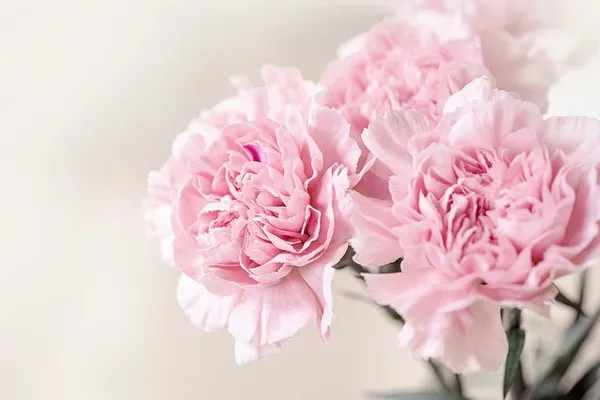In times of grief and loss, the act of sending flowers has long been a way to express sympathy, support, and condolences to those who are mourning. Flowers have a unique and powerful ability to convey emotions and provide comfort when words may fail us. However, selecting the appropriate flowers to send for a death can be a delicate and meaningful gesture that requires consideration and thought. In this article, we will explore the symbolism and significance of various flowers to help you make a thoughtful choice when sending condolences.
The Role of Flowers in Mourning
The tradition of sending flowers as a gesture of sympathy dates back centuries and spans across various cultures. Flowers, with their ephemeral beauty, have a way of bringing solace and serenity to the grieving process. They offer a tangible expression of love and support during a difficult time. The choice of flowers can convey specific sentiments, and understanding the meaning behind different flowers can help you select the most appropriate arrangement.
Lilies: Purity and Restoration
Lilies are perhaps the most commonly associated flowers with funerals and sympathy arrangements. These elegant and fragrant blooms symbolize purity and restoration of the soul. White lilies, in particular, are often chosen for funeral arrangements as they signify the innocence and purity of the departed. They offer a sense of peace and hope, making them a suitable choice to convey sympathy and condolences.
Roses: Love and Respect
Roses are well-known symbols of love and are often used in various colors to convey different emotions. In the context of sympathy, red roses can express deep love and respect for the departed. Alternatively, white roses, like white lilies, symbolize purity and innocence. Yellow roses can be used to represent friendship and support, making them an appropriate choice for comforting grieving friends.
Chrysanthemums: Honoring the Deceased
Chrysanthemums, commonly known as mums, have different meanings in various cultures. In many European countries, chrysanthemums are associated with death and are often used in funeral arrangements to honor the deceased. In Asian cultures, particularly in countries like Japan and China, chrysanthemums symbolize longevity and rebirth. When selecting chrysanthemums for a funeral, it’s essential to consider the cultural context and preferences of the grieving family.
Carnations: Devotion and Remembrance
Carnations are another popular choice for sympathy arrangements. They come in various colors, each with its own significance. White carnations symbolize pure love and innocence and are often used to convey sympathy and remembrance. Pink carnations represent admiration and gratitude, making them a suitable choice to honor someone who has touched your life.
Orchids: Eternal Love and Beauty
Orchids are admired for their exquisite beauty and elegance. They are often associated with love, luxury, and beauty. White orchids, in particular, can symbolize eternal love and heartfelt condolences. Their graceful appearance can bring a sense of comfort and serenity to the bereaved.
Hyacinths: Sincerity and Understanding
Hyacinths are known for their fragrant blooms and come in various colors. Purple hyacinths, in particular, symbolize sorrow and regret, making them a thoughtful choice when expressing condolences. Their symbolism conveys a message of sincerity and understanding for the pain the grieving family is experiencing.
Gladioli: Strength of Character
Gladioli, with their tall and impressive spikes of flowers, symbolize strength of character and moral integrity. They are often chosen to pay tribute to the departed’s strong personality and resilience. Gladioli come in various colors, so you can select shades that resonate with the character and personality of the person who has passed away.
Daffodils: Rebirth and New Beginning
Daffodils are associated with the arrival of spring and symbolize rebirth and new beginnings. Sending daffodils can be a way to offer hope and support to the grieving family, reminding them that life goes on, and there is the potential for renewal even in the darkest times.
Irises: Faith and Wisdom
Irises are known for their vibrant colors and intricate patterns. They symbolize faith, wisdom, and hope. Purple irises, in particular, are often chosen for sympathy arrangements as they convey a message of deep respect and condolences. The striking beauty of irises can provide comfort and solace during times of mourning.
Tulips: Perfect Love
Tulips are a symbol of perfect love, and they come in various colors, each with its own meaning. White tulips represent forgiveness and worthiness, making them a suitable choice when expressing condolences. Red tulips can convey a strong declaration of love and respect for the departed.
Conclusion
Sending flowers for a death is a meaningful and compassionate way to offer support and condolences to grieving individuals and families. The choice of flowers should be guided by the sentiments you wish to express and the cultural context of the mourning family. Each type of flower carries its own symbolism, allowing you to communicate your feelings with grace and sensitivity.
When sending flowers, it’s also essential to include a heartfelt condolence message or sympathy card to convey your thoughts and support. Ultimately, the act of sending flowers during a time of loss serves as a tangible reminder of the enduring beauty of life and the love that transcends even in the face of grief.


